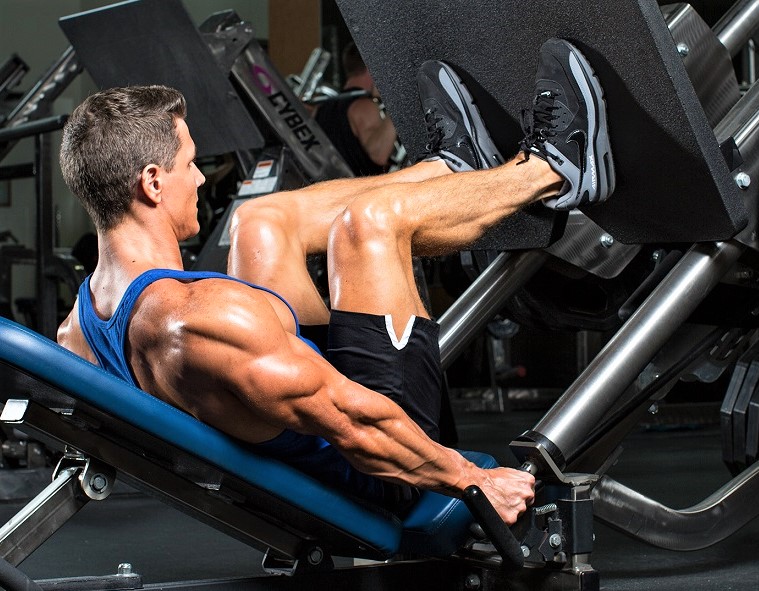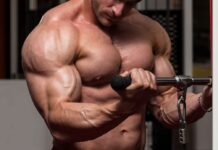Compound exercises are like team sports. Compounds involve more than one unique joint and therefore work more than one body part. For example, during a leg press, not only do your legs at your knee joints go from bent to straight (working your quadriceps), but your thighs at your hip joints go backwards from forward (working your glutes). For good measure, hamstrings and calves also receive a little work, mostly as stabilizers. From quads to forearms, what follows is a compound exercise guide that allows you to make every body part routine a team effort.
COMPOUND EXERCISES BASICS
◾️ A compound exercise engages more than one body part and involves more than one unique joint. For example, an overhead press works the deltoids and triceps and involves the shoulder joints and elbow joints.
◾️ Body parts aren’t worked equally with a compound exercise. Typically, one primary bodypart is engaged and secondary bodyparts assist and are worked less. For example, pulldowns work primarily the upper back (latissimus dorsi, trapezius, rhomboids) but the biceps and rear deltoids are valuable assistors.
◾️ Compound exercises typically allow you to utilize heavier weights than isolation exercises. But they also may make it more difficult to hit the targeted area(s).
◾️ More complex body parts, such as back, can be easily trained with only compound exercises. Single joint body parts, like calves, are more difficult to work with only compound exercises.
QUADRICEPS
Other than leg extensions and thigh adduction, every major quad exercise is compound. (We’re using “quad” for all muscles at the front of the thigh.) Squats, hack squats, Smith and other machine squats, and leg presses, and all their variations (one leg press, Bulgarian split squat, front squat, etc.), involve the glutes as well as the quad muscles. The hamstrings, lower back, and calves may also chip in, depending on the exercise and its form. The lunge is an all-around lower body compound, but to focus it more on the quads, do it standing in place, stepping forward and back, focusing on the up-down motion. Because of all the exercises and variations, it’s easy to do all-compound quad workouts.
HAMSTRINGS
All leg curls are isolation exercises. Stiff-leg or Romanian deadlifts target the hams along with other lower body muscles and the lower back. Likewise, though many think of lunges as a quad and glute exercise, they also work hams; and this is especially true if you take long strides during walking lunges. The good morning fits in either your leg or back routine, because it stresses the hamstrings and glutes as well as the lower back—all components of what’s known as the posterior chain.
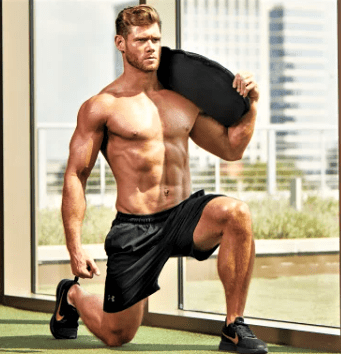
GLUTES
Back to the lunge. Whether you take a shorter stride (more quads) or longer stride (more glutes and hamstrings), the walking lunge is a great glute exercise. The hip thrust is another excellent glute lift that involves other muscles: spinal erectors, hamstrings, and quadriceps.
CALVES
Because all of the common calf raises isolate lower legs, you need something unique to hit your thighs and core with your calves. Try the walking calf raise. While holding dumbbells, rise as high on your toes as possible on each stride. (As we’ll see with the “farmer’s walk,” holding heavy dumbbells will also work your forearms.) For an extra stretch and without dumbbells, try doing these on stairs, maximizing the range of motion by landing the balls of your feet on the edges of the risers as you climb.
UPPER BACK
Due to the complex landscape of your back with multiple muscles working together and the fact that most lat lifts involve two pairs of joints (elbow and shoulder), you have to work very hard to come up with upper back exercises that aren’t compound. Your biceps and rear delts, in particular, assist on most lat lifts. Pullovers and stiff-arm pulldowns are rare exceptions, though they, too, get some assistance from non-back muscles. Because the many types of pullups, pulldowns, and rows are all compound, it’s likely you’re already doing an all-compound back routine.
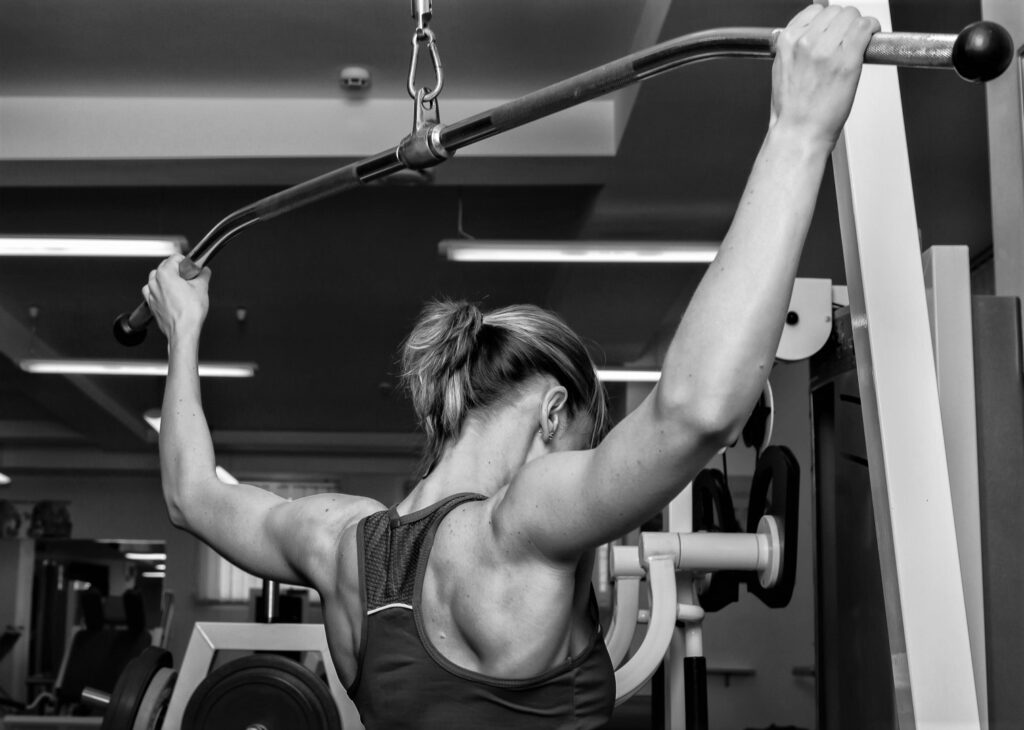
LOWER BACK
Various kinds of deadlifts target the spinal erectors along with a panoply of lower and upper body muscles (quads, glutes, traps, etc.). Likewise, the good morning works the spinal erectors with the hamstrings and glutes.
CHEST
Like upper back, chest is easy to work all-compound. Because they incorporate two sets of joints (shoulder and elbow), every chest press hits the pectorals with assistance from the front deltoids and triceps. The same is true of dips, though you should lean into dips to hit the pecs more and triceps less. In contrast, any flying motion in which you keep your elbows locked (whether with dumbbells, cables, or a machine) is an isolation exercise.
DELTOIDS
Similarly, for shoulders, overhead presses of various types focus on the front and medial deltoids but also involve the triceps, especially at the tops of reps. Upright rows with a shoulder-width or wider grip target the medial deltoids but also hit the trapezius and biceps. Wide-grip rows hit the rear delts along with the upper back and biceps.
TRAPEZIUS
Shrugs are isolation lifts. However, upright rows work traps with assistance from medial delts and biceps. You can also focus rack deadlifts on your traps by doing only the top of pulls with the bar in a power rack and the supports set just above your knees. Power cleans are a compound and ballistic exercise that you may feel more in your traps than any of the many other muscles worked.
ABDOMINALS
Planks stress the abs, but much of the body is involved in keeping you up, including glutes, legs, lower back, and delts. Other core exercises, like the barbell rollout and the press sit-up, also work multiple bodyparts with the abs.
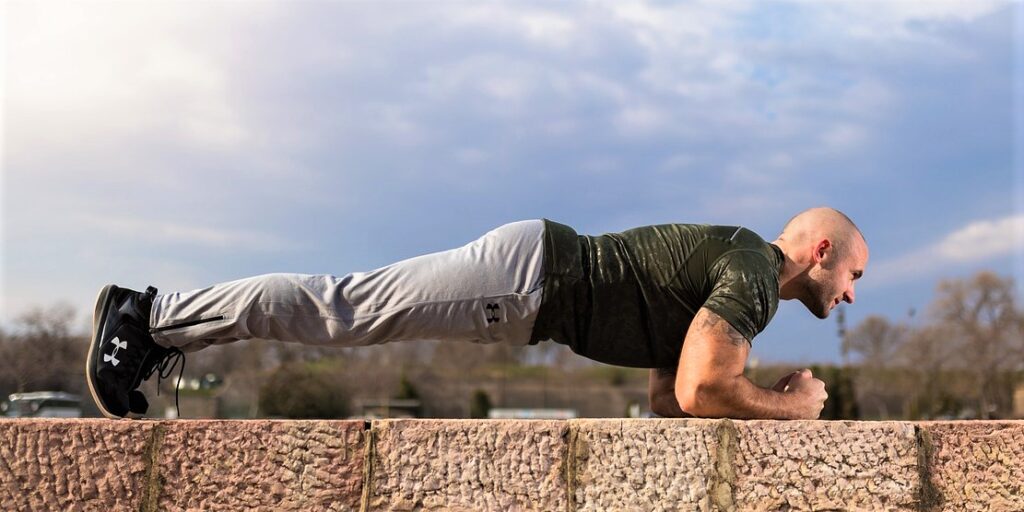
TRICEPS
A compound triceps routine will look similar to one for chest: presses and dips. To focus on the triceps, use a narrow grip on bench presses and/or do only the top halves of reps (a power rack or Smith machine supports can limit how low the bar goes). Whether with a machine or parallel bars, stay upright when doing dips and locate the movement in your elbow joints. You can also do bench dips with your feet in front of you and hands behind your back.
BICEPS
All of those curls you do are isolators. Perhaps the best compound biceps exercise is the chin-up (underhand pullup). Do them rigidly strict to target the bi’s more and back less. You can also do strict underhand pulldowns. This is another back exercise that works the biceps hard, especially if you do them after curls to pre-exhaust your biceps. If we cheat (pun intended), a third possibility is the cheat barbell curl, which involves the legs and lower back to swing a heavy weight up, turning an isolation exercise into a sort of compound exercise.
FOREARMS
Reverse curls and hammer curls work the lower arms in conjunction with the upper arms’ brachialis and biceps. The old-school grip exercise, the farmer’s walk, targets the hands and forearms along with the trapezius, core, and legs.
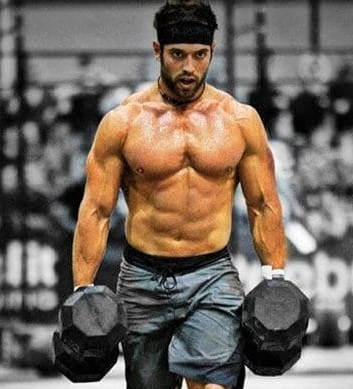
COMPOUND EXERCISES TRAINING TIPS
◾️ When necessary, alter a compound exercise to best stress the targeted muscle(s). For example, leaning into dips works the chest more, while staying upright works the triceps more.
◾️ Doing an isolation exercise before a compound exercise will better focus the compound on the body part targeted by the isolator. This is known as pre-exhaust.
◾️ Cheating can turn some isolation lifts into pseudo-compounds. For example, adding leg and back motion to barbell curls distributes some of the work to secondary muscles. Usually not recommended, this can be effective if done sparingly.
COMPOUND EXERCISES ARM ROUTINE
Machine Dip — 4 x 10-12 reps
Close-grip Bench Press — 4 x 6-10 reps
Bench Dip — 4 x 8-12 reps
Chin-up — 4 x 10-12 reps
Cheat Barbell Curl — 4 x 6-10 reps
Underhand Pulldown — 4 x 8-12 reps



































